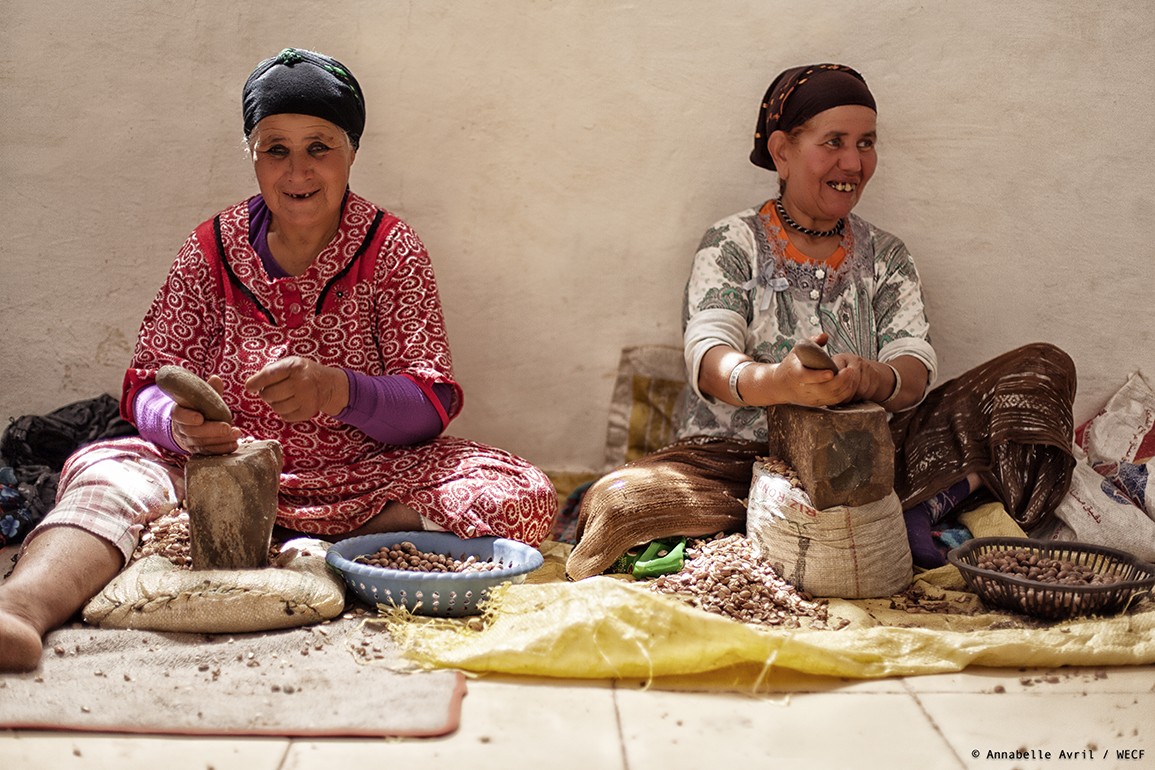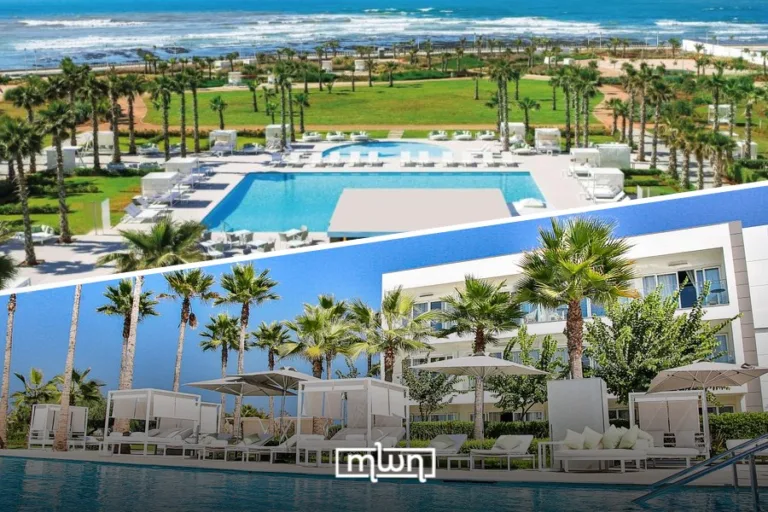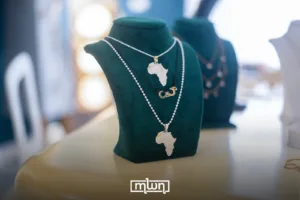Doha – Tucked away in the arid southwest of Morocco lies a precious natural treasure: the argan tree. Referred to by locals as the “blessed tree,” this hardy plant produces nutritious argan oil, used for centuries by the Amazigh people of the region.
With its rich, nutty flavor and powerful antioxidant properties, argan oil has recently caught the attention of the international wellness community. But what makes this elixir so special? Let’s take a closer look at the argan tree, the painstaking process of extracting argan oil, and the ways Moroccans have upheld ancient traditions around this liquid gold.
The tough argan tree
Argania spinosa, known as the argan tree, thrives mainly in the Souss Valley of southwestern Morocco. This area covers parts of the Souss-Massa, Marrakech-Safi, Essaouira, and Guelmim Oued Noun regions, where the rugged Atlas Mountains border the Atlantic coast.
The argan tree is well-adapted to hot, arid climates. Each tree can live for over 200 years, enduring sweltering temperatures, nutrient-poor soil, and low rainfall. Argan trees grow thick, spiny leaves and produce a small, bitter, olive-shaped fruit. When mature, these argan nuts turn yellow or brown and contain one to three oil-rich kernels, similar to almonds.
Morocco harbors the world’s only significant argan forests, with around 20 million trees covering over 830,000 hectares. On average, each argan tree produces about 8 kilograms of fruit per year. Attempts to cultivate the trees elsewhere, like the United States, Israel, and Mexico, have largely failed.
Nearly 90% of the rural economy in the argan region depends on the agro-forestry system of the argan tree, with more than 2 million people affected by the exploitation of traditional agro-forestry systems based on this tree.
Additionally, between 2012 and 2022, public investments totaling over MAD 125 billion ($12.5 billion) were made in the oasis and argan zones, contributing to an increase in the GDP of these areas to approximately MAD 145 billion ($14.5 billion) in 2021, a growth of nearly MAD 49 billion ($4.9 billion) since 2012.
From nut to nectar: producing argan oil
Extracting argan oil requires an extremely labor-intensive process. First, mature argan nuts are collected and dried in the sun. Next begins the most time-consuming step: cracking open the durable outer shells to access the kernels inside.
Traditionally, Moroccan women expertly crack the shells using two smooth stones. The kernels are then crushed and ground using a stone mill to make an oily paste. This paste gets kneaded by hand, often for hours, and mixed with warm water to extract the precious oil.
The production of just one liter of edible argan oil takes around 40 kilograms of fruit and at least 8 hours of manual labor. If the oil is destined for cosmetics instead of cooking, even more nuts are required since the kernels aren’t pre-roasted.
While grueling, this traditional technique has provided rural Moroccan women with income and elevated social status for generations. Many work together in women’s cooperatives to help meet or alleviate the exacting demands of producing argan oil.
Healing properties of liquid gold
Argan oil possesses a wealth of bioactive compounds and nutrients. It contains high levels of vitamin E, omega-6 and omega-9 fatty acids, carotenes, antioxidants like ferulic acid, and triterpenoids like amyrins.
These properties make argan oil a superfood for health and beauty. Consuming argan oil may boost heart health by reducing inflammation, cholesterol levels, and risk of atherosclerosis. Applied topically, it hydrates skin, repairs signs of aging, fades stretch marks and acne scars, and soothes conditions like eczema and psoriasis.
Argan oil is also renowned for strengthening hair and nails. Its high content of vitamin E and fatty acids nourishes hair follicles and repairs split ends. When massaged into nails and cuticles, it may even prevent brittle nails.
Culinary use
In Morocco’s Souss region, argan oil anchors age-old Amazigh culinary traditions. Perhaps the most notable example of the culinary use of argan oil is amlou. A popular regional breakfast or dessert, amlou is a thick almond paste made from roasted argan oil, crushed almonds, and honey. This sweet spread highlights argan oil’s rich, nutty taste and creamy texture.
It symbolizes Moroccan hospitality and is often served with bread to welcome guests. Beyond amlou, argan oil features in many Souss dishes, adding flavor and nutrients to local meat, vegetable, and couscous recipes.
Argan ecosystem under threat
According to the economic analysis of the argan sector in Morocco, the argan forest has decreased from around 1.4 million hectares at the turn of the century to around 820,000 hectares today.
Despite the implementation of defense strategies, such as prohibiting access to the forests for three months of the year to restrict grazing during the fruit production season, the argan forests continue to face numerous threats. Illegal grazing and logging of argan trees for charcoal production persist, exacerbating the threats to an already fragile ecosystem.
Moreover, the overgrazing of argan forests by “Sahrawi” camel herders in southern Morocco has led to social conflicts and serious confrontations with local populations who hold the rights to these lands.
The plain area, where argan trees are concentrated, is subject to the gradual intensification of agriculture, urbanization, and infrastructure development, further endangering the survival of these unique forests.
Additionally, the mountain regions where argan grows are particularly vulnerable to the impacts of climate change, deforestation, and overgrazing by animals, compounding the challenges faced by this valuable natural resource.
International recognition
Luckily for the endangered argan tree, international organizations have recognized its ecological significance. In 1998, the UNESCO Man and Biosphere Programme designated Morocco’s Arganeraie Biosphere Reserve to protect and rehabilitate argan forests.
Then in 2014, UNESCO added the knowledge and practices around argan oil production to its Representative List of the Intangible Cultural Heritage of Humanity. Most recently in 2018, the FAO honored Morocco’s ancient argan-based agricultural system as a Globally Important Agricultural Heritage System.
In 2021, the United Nations General Assembly declared May 10 of each year as the International Day of the Argan Tree. This resolution, proposed by Morocco, was adopted unanimously by 113 Member States of the United Nations.
To further conserve this unique resource, the Moroccan government founded the Moroccan Agency for Development of Oases and Argan Trees (ANDZOA) in 2010.
Looking ahead, ANDZOA has outlined a forward-thinking strategy for the oasis and argan zones through 2030, focusing on three key orientations: increasing the resilience of territories and ecosystems to climate change; improving the social well-being of rural and urban populations; and diversifying the region’s economy to enhance competitiveness and steer growth towards high value-added sectors.
Thanks to these efforts, the future looks bright for Morocco’s iconic argan tree – a tenacious survivor and provider of liquid gold that has enriched Amazigh culture for centuries. This ancient tree truly deserves its lofty nickname: the blessed tree.
Read also: The Ethics of Morocco’s Argan Oil















